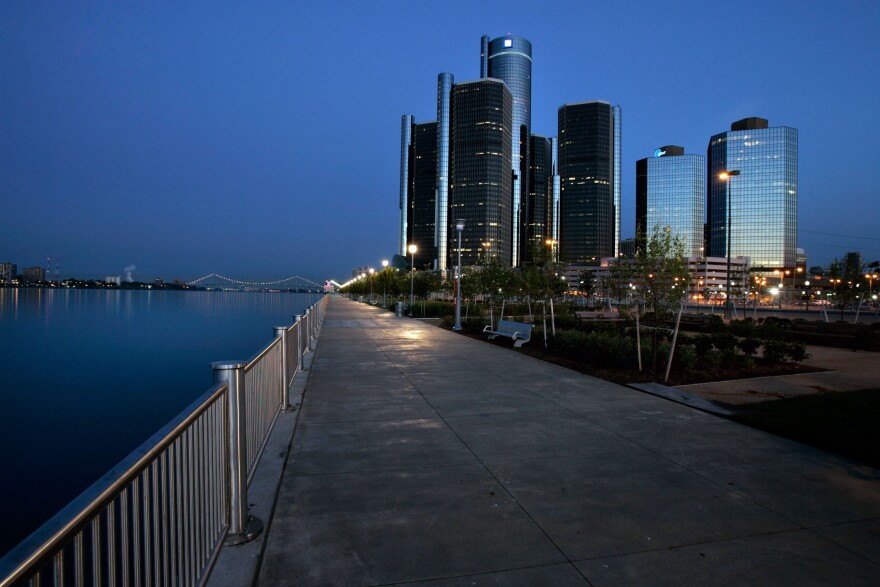If we're lucky, we can catch a glimpse of a migrating bird or two as they pick their way north, but most pass over without us ever knowing.
The Cornell Lab of Ornithology describes it this way in their Round Robin blog:
An invisible river of animals, rivaling any scene from the Serengeti but consisting of half-ounce birds that pass quietly overhead, in the dark.

Michigan gets it fair share of birds passing overhead in the dark.
We're part of the Atlantic and Mississippi flyways, and while no one knows exactly how birds do it, researchers do know birds use light to help them migrate.
In today's Detroit News we hear how General Motors is encouraging its workers to turn off the lights in the Renaissance Center.
Lights from buildings can confuse the birds and throw them off-course.
The number of deaths caused by nighttime building collisions is in the tens of millions according to the American Bird Conservancy.
The News reports GM has been recognized by the Detroit Audubon Society for its efforts:
GM encourages employees to turn off their lights at night during spring and fall migrations, from March to May and August to October... GM has been part of the Safe Passage Great Lakes program for seven years, Kelsey said. This is its first award.
We often don't think of these migrating birds because we can't see them.
You can see a video of migratory birds caught in city lights in Chicago. It was put together by Chicago Bird Collision Monitors, a volunteer bird rescue group.
http://youtu.be/rbUaCLFeHFA
And in the Round Robin Blog, Cornell Lab scientist Andrew Farnsworth was on hand to count migratory birds as they passed through the shafts of light beamed into the sky over New York:

In all he saw at least 2,000 birds and heard the faint chip notes of many more. He identified 28 species passing overhead and at times flying through the beams of light, where the rush of bodies looked like flurries of snow, he said.
Some make it over a city, some don't.
These birds didn't make it in Toronto:

If you want to do something to cut down on nighttime bird-building collisions, Chicago Bird Collision Monitors has these tips:
- At minimum - Extinguish or dim display lighting, including spotlighting, decorative, advertising and rooftop lighting, on buildings over forty (40) stories from 11:00 p.m. until sunrise during designated spring and fall migration periods
- What's desired - Install efficient shield lighting for all exterior lighting fixtures, including decorative, advertising, and security lighting. Light focused downward, eliminating direct upward light and reducing spill light
- And the best practice - Eliminate display lighting, including spotlighting, decorative, advertising, and rooftop lighting
*Correction - An earlier version of this story stated GM was recognized by the "Michigan Audubon Society." GM was instead recognized by the Detroit Audubon Society. It's been corrected in the copy above.







